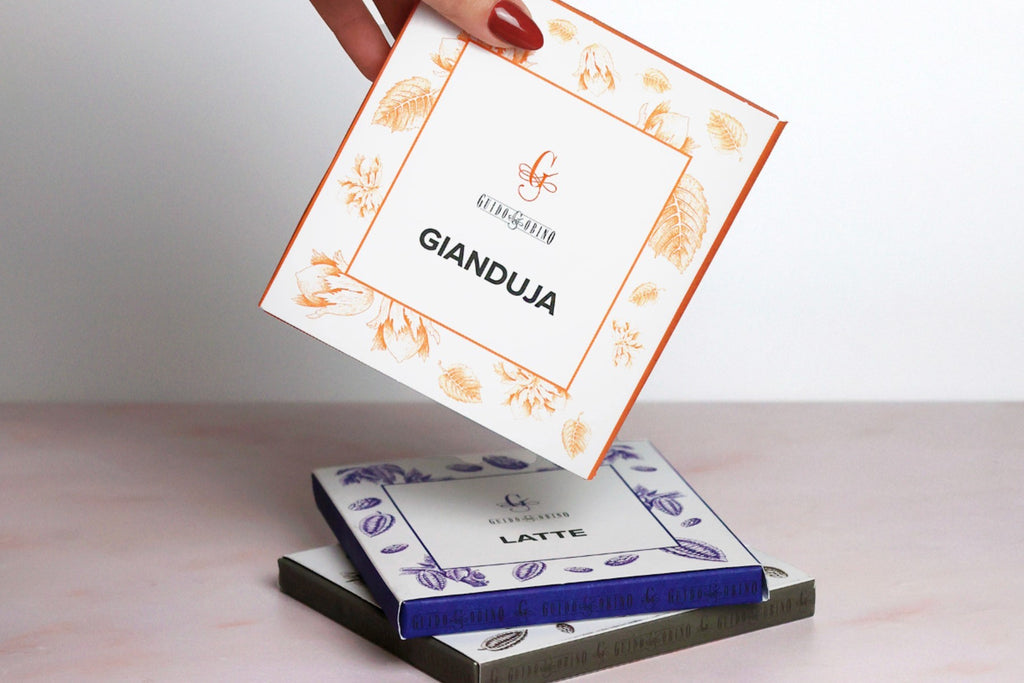The Piemonte region has a long history as a center of chocolate artistry.
Perched in the northwestern corner of Italy, the region of Piemonte is known as the country’s gourmet capital for its remarkable natural resources, including truffles, hazelnuts, and Barolo wine. But one of its most beloved products is one that grows thousands of miles away: chocolate.
Walking the streets of Torino, Piemonte’s capital, you’ll pass one historic chocolate shop after another, most of them dating back more than a century. Luscious truffles, chocolate-hazelnut giandujotti, and striped cremini tempt passersby from glittering display windows, and the local favorite bicerin, a decadent combination of hot chocolate, espresso, and whipped cream, can be ordered in every caffè.

Though Italy may not be the first European country you associate with fine chocolate—Belgium and Switzerland both have more international fame these days—its history with the sweet treat goes almost all the way back to chocolate’s arrival in Europe. It was first brought to Spain by Hernán Cortés, who had been introduced to the stuff in Mexico. Cacao trees grew abundantly in the Americas, and their fruit was used to make a bitter, unsweetened drink that was enjoyed by many Mesoamerican peoples.
Chocolate’s arrival in Spain in the early 16th century coincided with a time of constant wars and shifting borders in Europe. At that time, the state of Savoy (which covered Piemonte, as well as parts of modern-day Switzerland and France) had been controlled for decades by the French, who ruled it from the French city of Chambéry. In 1559, Savoy Duke Emanuele Filiberto won back control of his state and moved its capital to Torino, where he celebrated with a cup of chocolate brought over from the court of his cousin, the Spanish King Philip II.
The exotic arrival quickly became fashionable in the new capital city, as many newly free Turinese looked to emulate their duke in every way. A steady stream of cacao beans were imported from the Americas, and Turin became a hub of cocoa processing and sale. By the 1800s, Piemonte locals had become so attached to their beloved cioccolato that when the Napoleonic wars threatened their ability to import cacao, they innovated by stretching what they had with local hazelnut paste, creating gianduja. The creamy new delicacy, which you might know best as Nutella (produced by the Ferrero company in Alba, about 30 miles south of Torino!), is now a staple of the city.

So how did the Swiss and Belgians end up taking over the chocolate crown? The first Swiss chocolate region was the canton of Ticino, an Italian-speaking province that dips below the Alps and ends just north of Lake Como in Italy—not far from Piemonte. It was a Swiss inventor who first came up with a method for blending cacao powder with condensed milk for a smooth, melting chocolate, an innovation that was hugely popular. In Belgium, King Leopold II was so taken by the imported stuff that he brutally colonized the African country of Congo, where cacao grew freely, in order to have his own personal supply and take over the European market.
Today, Italy’s chocolate may not be as widely known, but Italians know that the best chocolate in the world continues to be made in Piemonte. From historic companies like Venchi and Barbero to relative newcomers like Guido Gobino, all of our favorite chocolatiers continue to perfect their sweet art in this beautiful land at the base of the Alps.
















1 comment
Giana, you are a dear to share this information with us! Thank you.